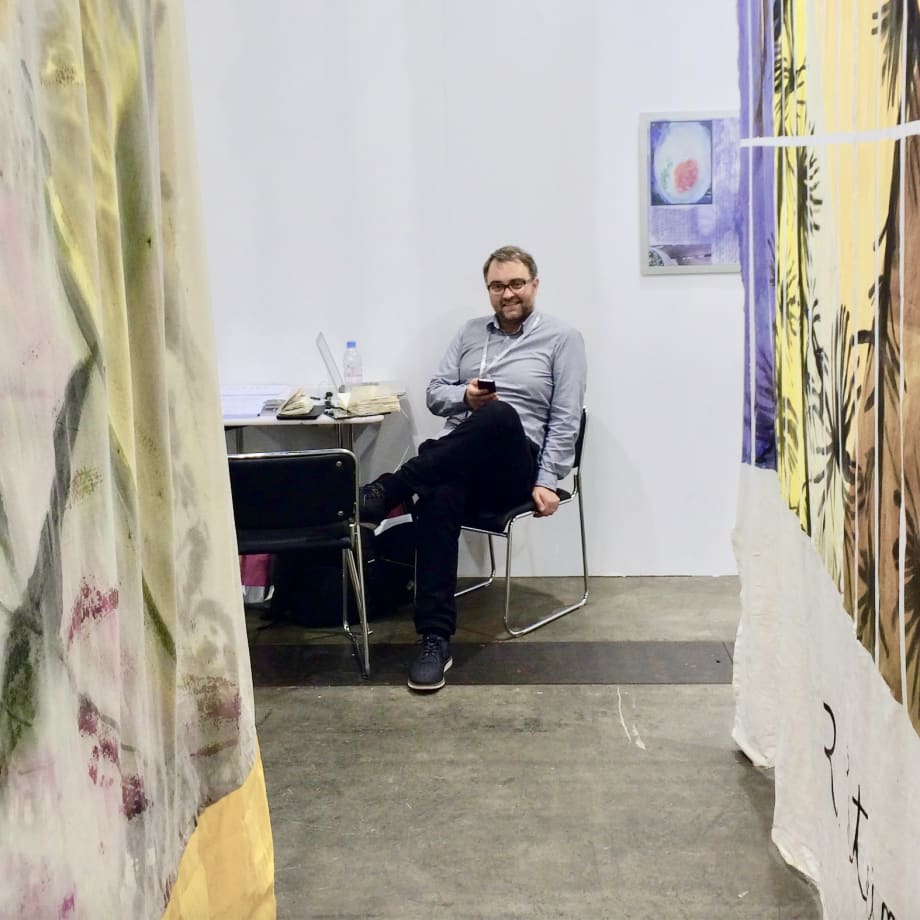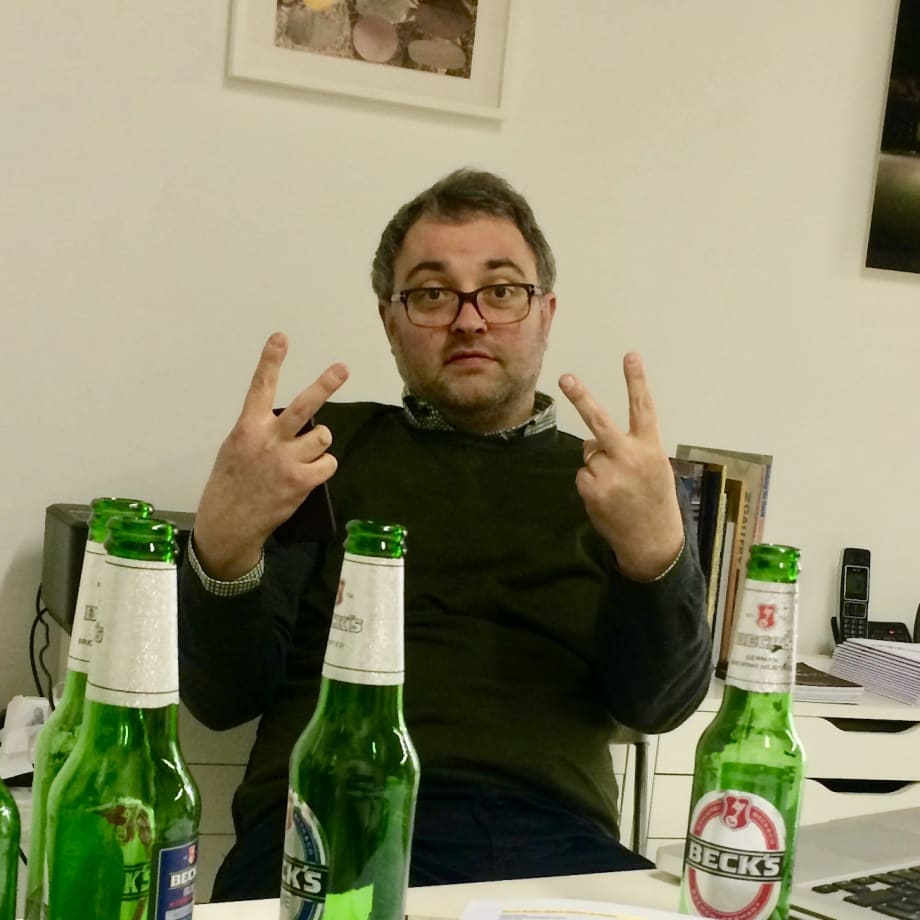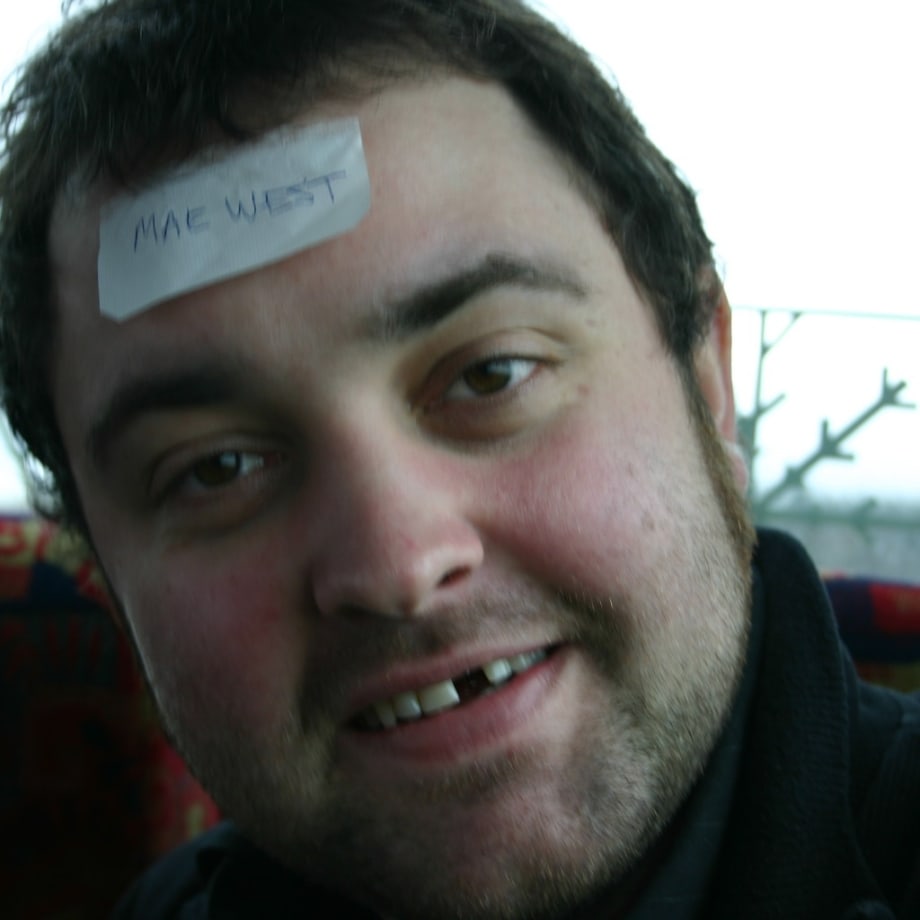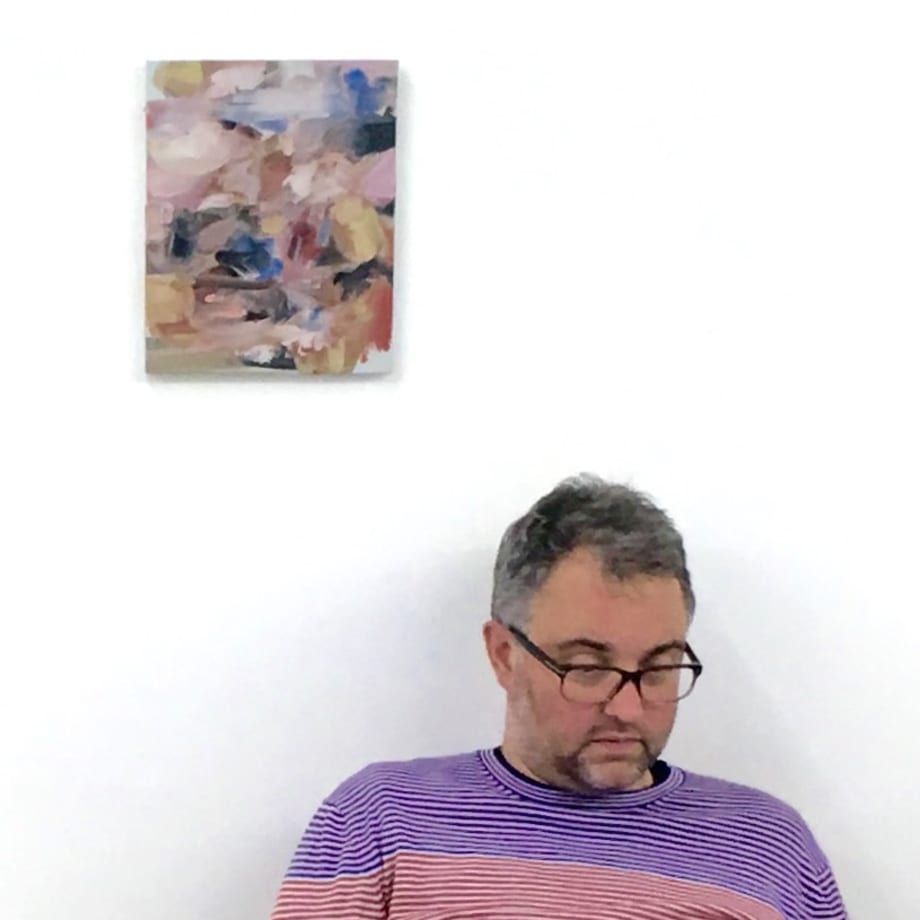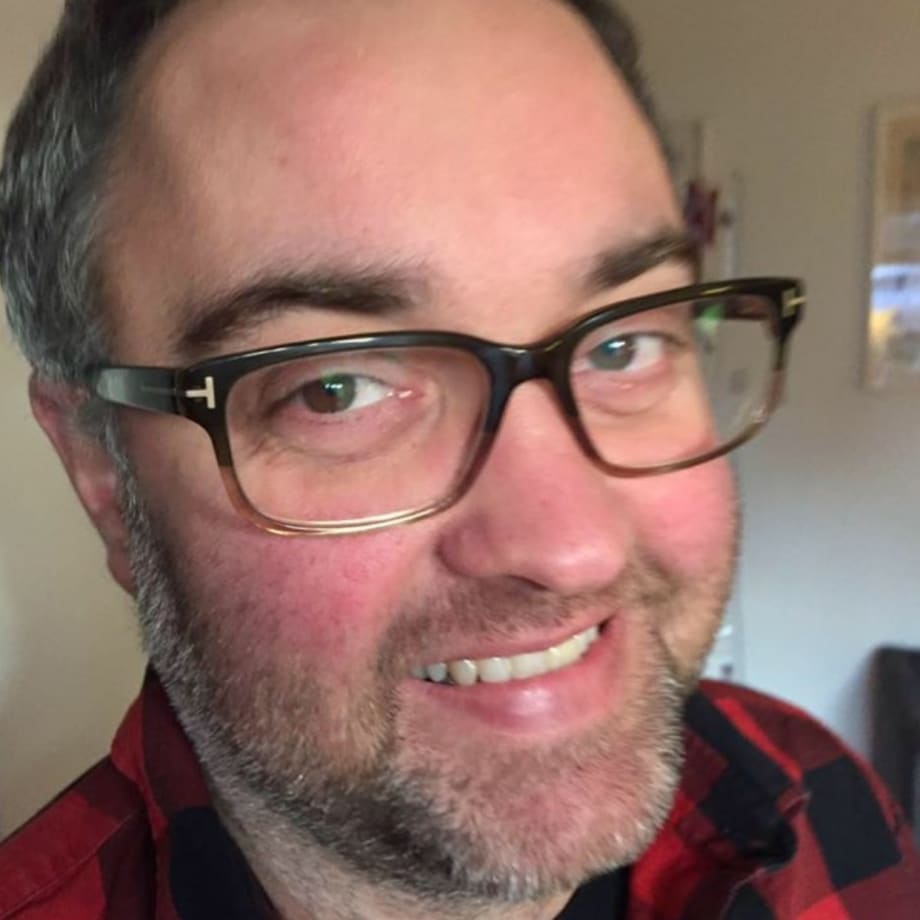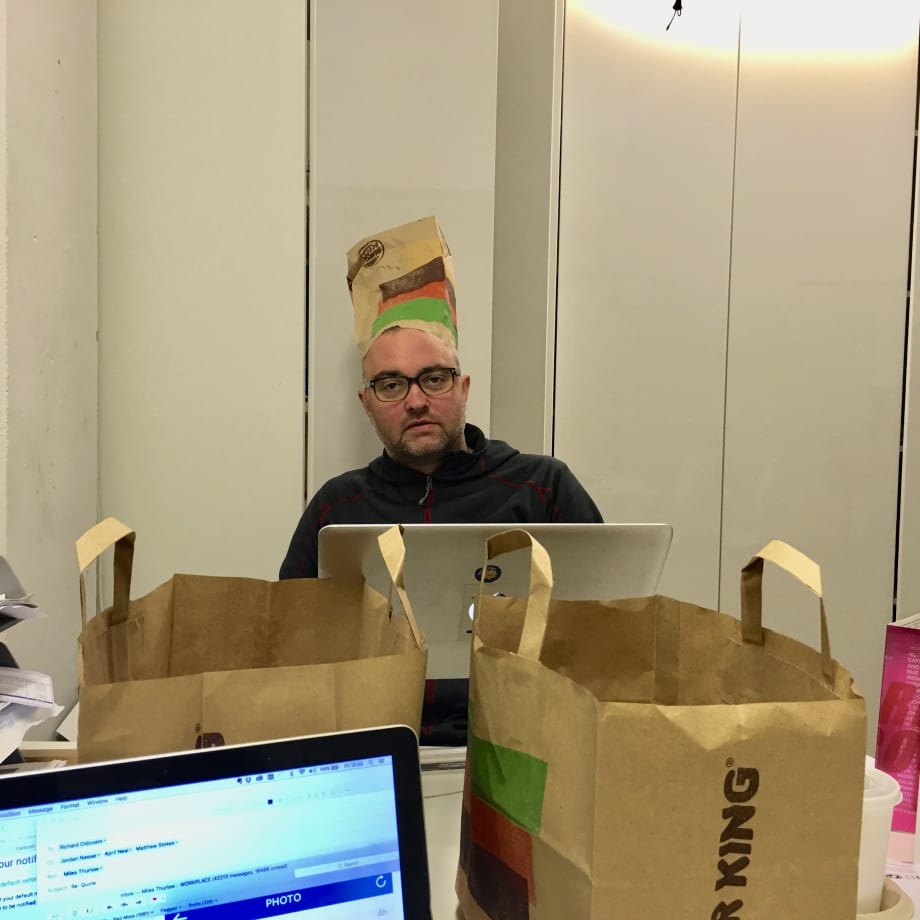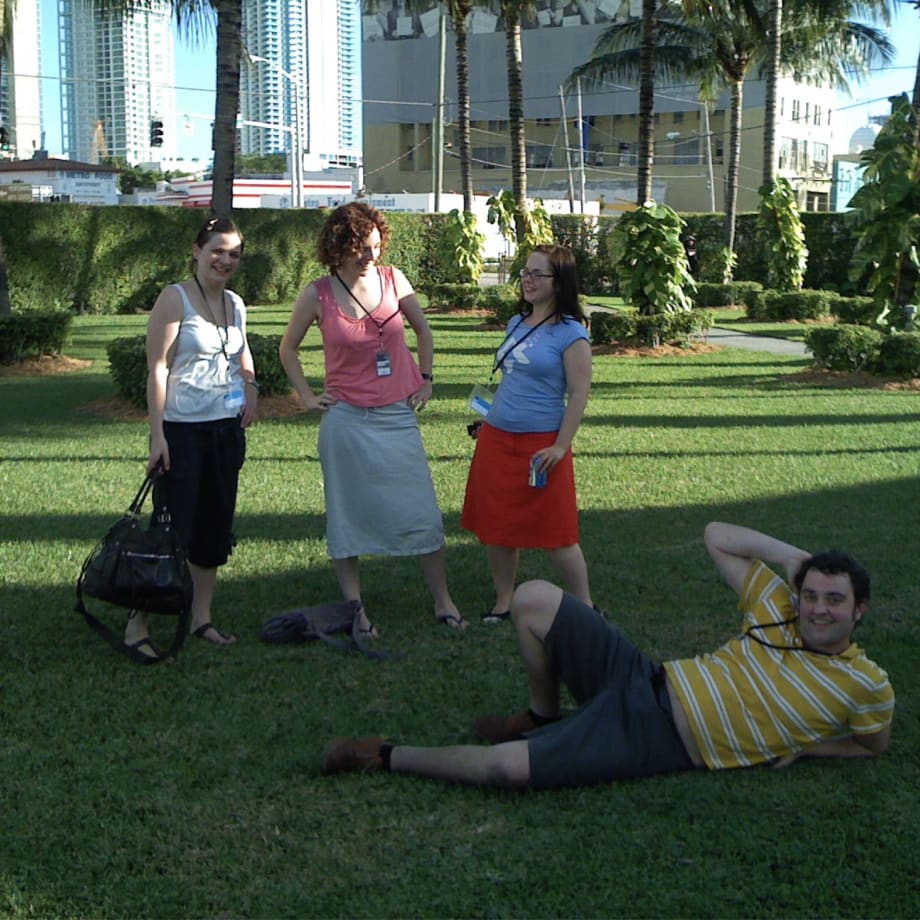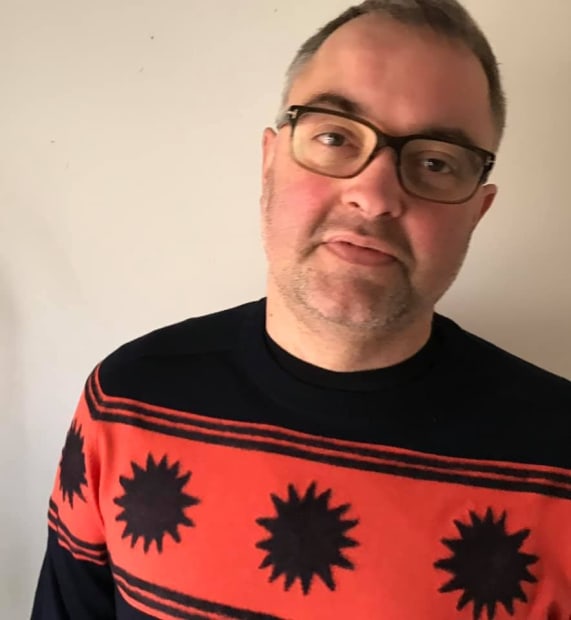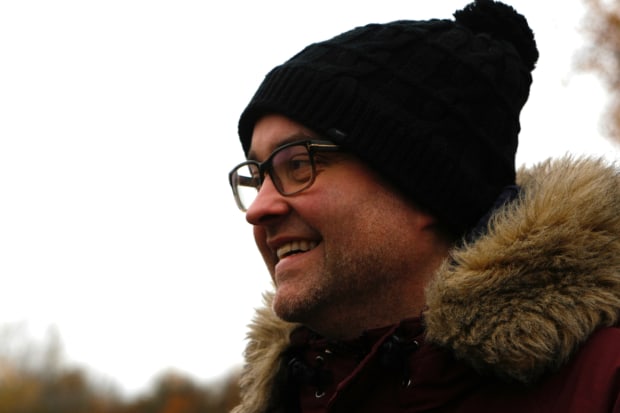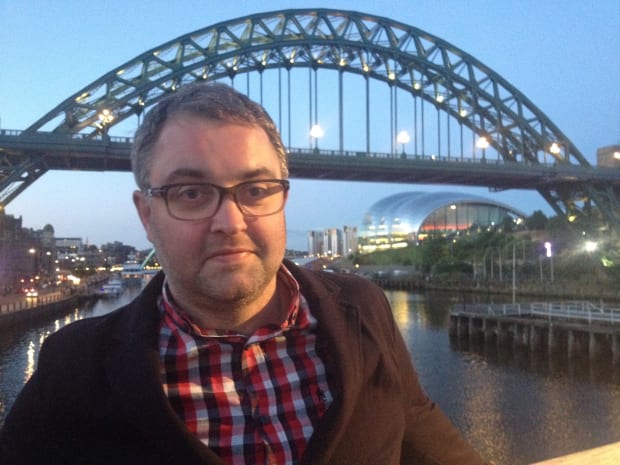Paul Moss
Co - Founder / Director of Workplace and Workplace Foundation.
25 February 1975 - 14 February 2019
I first met Paul Moss in 2002 in the run up to Newcastle Gateshead’s failed bid for European Capital of Culture. We were on a research trip to Rotterdam organised by Waygood gallery and studios where Paul had a studio and I had just managed to sneak on to the trip as my girlfriend at the time was working there. We ended up stood next to each other in a gallery that had no fixed abode, and only had a table which it took from short term lease to short term lease. Rather than previews they would organise meals and all the burghers of the scene would arrive and share their best offerings of take-out food.
Immediately attracted by this low cost, low responsibility model I found myself stood next to Paul both muttering ‘we should do something like this in Newcastle...’
I had found my co-conspirator and a two decade long relationship of plotting, strategising, trying things out, failing and sometimes succeeding had begun.
Introducing Paul to another artist Richard Forster added fuel to the fire and I would soon find myself, not for the last time, lost and out of my depth in boozy football chat in stinking smoky pubs learning about Liverpool football club and heroic cultural figures of the North. As an Essex boy from the ‘burbs of Colchester very little of it stuck, and I still haven’t much of a clue.
Through these often testy discussions emerged one central question:
How could artists live and work in the impoverished and chronically overlooked Northeast of England, but be part of an international artworld?
As an artist led group we put together some shows in the North but our first serious attempt at answering this question was at the Start section of the London Art Fair in 2003 (predating the first Frieze Art Fair), we buttered up one of the advisors to the fair - Paul Hedge at Hales Gallery by travelling down to his Deptford gallery and deploying Mossy ’The Scouser’ who we discovered had a natural gift of the gab, and a seemingly endless reserve of energy from which to use it.
We had printed off a folder of the works of our peer group, in those pre-digital camera days a simple folder of printed images was a serious sign of commitment. Our artists were basically Paul’s mates from the fine art course at Newcastle University and a few others who were active in the Newcastle art scene. Within a few days we had a call to say the selection panel was coming to visit our gallery in Newcastle.
We didn’t have a gallery in Newcastle, so we borrowed a nice apartment on the quayside owned by a friend of Paul’s that he knew from his bar job at Live Theatre, a bottomless treasure trove of contacts from the murky underbelly of the Northeast cultural sector.
A strange post-millennial architectural pastiche, the apartment had a large turreted semi circular open space with stunning views of just opened BALTIC and the under construction Sage music centre opposite. We were witnessing a breaking wave of investment into the region, devolution, EU funding, Lottery money and much needed investment in the infrastructure of culture outside of London.
We hid the massive 2 meter hole to the floor below under a large pink plinth and some sculptures. Brewed endless cafetieres of coffee to mask the smell of wet paint. We got the gig and took a booth opposite David Risley, who Paul formed an immediate bond with as they both had the same missing tooth, and shared a burning passion for Liverpool FC. Half expecting to be laughed out of town we were stunned to place works immediately with significant collections such as Simmons and Simmons and Government Art Collection. Realising that the rhizomatic uniformity of the art fair booth provided perfect cover for our geographical and fiscal inadequacies, our imposter syndrome induced anxiety began to dissolve quickly.
Back home in the North, and now without Richard who wanted to focus on his practice as an artist, Paul and I had decided that we wanted a more permanent home for our curated shows. Somehow Mossy had managed to find and sweet talk Christine the manager of the ailing Trinity Square shopping centre, better known as the ‘Get Carter Car Park’ after its role as the backdrop to the 1971 film starring Michael Caine. The only condition to our new 3 story 2500 square feet of shop front space was annual payment of a £1 peppercorn rent, and verbal commitment that we would judge the annual Gateshead Indoor Market Christmas Art Competition - something that Paul and I did for several years with as much seriousness as Turner Prize Judges, but probably with several extra platters of cheese savoury sandwiches, a large bottle of whiskey each and a box of Quality Street at the end.
Sometime around this time - and I’m not great with dates - Paul had a party at his house where I met my amazing wife Cath Campbell, and not too long after that he met Cecilia Stenbom who he married and had two wonderful children with.
We loved our first space in Gateshead. Brooding away beneath the sublime and ominous concrete mountain of the brutalist Get Carter Car Park that was a two fingered blight on the sweeping Georgian skyline of wealthier Newcastle; and an unwelcome reminder of its scruffy Gateshead sibling.
Paul and I took a shovel and a grinder to the concrete floor of the mattress shop - painstakingly scraping off the carpet glue and scrobbling the floor ourselves. We persuaded a couple of technicians from Baltic to help us fit out the space. By the time we had finished we had transformed it to a space that would have held its own in New York or Berlin complete with shadow gaps and striplight rectangles.
We ran a programme there, nestled between the 'Pay Day Advance Cheque Centre' and 'Girls World' (still not sure) for several years until Gateshead and Tesco’s sold our brutalist architectural gold and demolished and rebuilt Gateshead town centre into a cleaner autoCAD version of the same poverty and ‘nicer’ looking empty shops.
Back in our new space, Paul got a call from Soraya Rodriguez interviewing him for Zoo Art Fair - Frieze’s excellent and much missed satellite Fair. Soraya asked Paul what was good about the Newcastle art scene? He sold it to her, and some.
Local rivalries and petty fiefdoms were immediately abandoned by Paul who would slip into effortless generousity, raising others above himself and speaking enthusiastically about their merits.
Taking part in Zoo in its second iteration was a game changer for us and we were suddenly exposed to waves of collectors followed by curators from New York and all over Europe. Our prices were low and our enthusiasm for the artists we were showing, and for meeting new people was high. We enthusiastically surfed the wave of new art fairs that grew up internationally. The success of Frieze Art Fair marking a change in the way that art was consumed and experienced internationally.
From Zoo it felt like we went on a seemingly non stop world tour of Art Fairs, to Pulse in New York, then to Nada Miami, to Art Cologne, Düsseldorf, Chicago, Dallas, Los Angeles, Turin, Tokyo, Art Basel Hong Kong. Most of which we did for several years, we always did good booths and several of our artists achieved major recognition and picked up significant solo exhibitions and representation directly from the fairs.
One year (2014) we even got in to Frieze Art Fair in London! I’m possibly wrong about this but I believe we were the first gallery in England from outside of London to do so. This sentence alone speaks volumes about a wider UK cultural crisis and a systemic and prolonged disinvestment in the regions, but now Is not the time for a political rant...
Through fairs we built a client base but importantly a network of friends. Many people complain about art fairs, which is understandable but Paul and I always loved bumping into our peer group of gallerists. The psychological makeup of a gallerist or art dealer has shared characteristics: Passionate about their artists, stubborn determination, a gamblers reckless attitude to risk, the ability to think on one’s feet and speak quickly, clearly and intelligently about often some of the most obtuse, impenetrable artwork - often while jetlagged or hungover or both. Paul and I had it in spades and I think we brought it out in each other. Some of my happiest memories are of countless adventures with Paul, exploring far flung places, hanging out with fellow gallerists, and often extraordinarily eccentric art collectors. Paul often putting his ‘size 12’s’ in it and his Northwest humour missing the mark. I’m still confused as to why the old man on the subway in Tokyo shouted at Paul and slapped him before disembarking, I think he had his legs crossed in the wrong direction or something; or when Paul decided to take on a group of men - quite obviously mobster drug dealers - at 8 ball pool in Miami’s Duece bar and started thrashing them like he was Tom Cruise in the Color of Money. Typically he won them over and they were gracious in their defeat ‘you have the fire in your belly!’ Paul could and would make friends with anyone, effortlessly.
Several years ago Paul mentioned that he had been diagnosed with an aneurism on his aorta. I knew Paul was a sufferer of Wiskott - Aldrich syndrome but I didn’t know much about it. I knew that blood didn’t clot easily and he was much more susceptible to illness and infection. He seemed to take it all in his stride - at least on the surface - and it made little difference to his appetite for life and seemingly the only difference was more heavy lifting for me. After several stent operations life picked up and carried on.
2.5 years ago they found that the stents were failing and they had to operate imminently. Paul had a full aorta transplant, an extraordinarily risky procedure for someone with his condition that demanded very high level coordination between various specialist teams. I remember my rising anxiety during Dallas Art Fair my first solo art fair without Paul. I was following the text message updates from our tight network of artists and friends as the surgery dragged on longer and longer, and as complications started to unfold. And my huge relief whilst hiding my phone from the air stewards I found out that he had woken up just before my plane home took off .
Paul was completely off work for many months in recovery. During that time we proceeded to set up Workplace Foundation, a charity with the aim of supporting emerging and under represented artists from outside of London. It was clear to me on returning back to work that Paul needed to base himself more in Gateshead while I took more responsibility for travel and sales and running our space in Mayfair London, that we ran from 2013 - 2018 (before being gazumped during the lease renegotiations by the hedge fund and patrons of the arts upstairs who wanted it for their Gym).
Paul took to his new role like a duck to water and he put together an amazing programme of artists and events, forming partnerships and lasting friendships with organisations like Jerwood Foundation, Eastside Projects and The Conduit in London. Along with the support of a wonderful board we secured a round of Arts Council National Portfolio status and set up a patrons scheme that has been very generously subscribed to. Paul was always brilliant at finding new artists, seeing something in their practice and teasing out aspects that they might not have considered previously.
On 18 December after submitting some very arduous reporting on the business, Paul was admitted to Newcastle’s Royal Victoria Infirmary with suspected acute pneumonia, soon discovering that there was actually a problem with one of his previous stents. On New Year’s Eve Paul was transferred to have emergency surgery at the Freeman Hospital. They found out this new stent had failed a couple of days later. Deciding eventually to go ahead with further surgery and led by a brilliant surgeon, Paul was given a new aorta through a complex but successful transplant operation.
Recovering quickly Paul was soon beginning to return to form. He ‘FaceTimed’ me on Thurs 24th January from his hospital bed as I was hanging Louise Giovanelli’s new show at our Gateshead space. We had a laugh and a joke and it was so lovely to see him with a cheeky smile on his face, teasing me about the height of the hang.
A couple of hours later he was found unconscious and had suffered Cardiac arrest. Quickly operating on him they repaired his heart but resuscitation was an ongoing challenge. Over that last couple of weeks Paul’s condition improved and worsened repeatedly and it became increasingly difficult to take him off life support.
The last 8 weeks have been such an emotional rollercoaster for all who know him and love him. I cannot adequately express my admiration for his wife Cecilia who has been there throughout, and has shepherded his beautiful, bright, cheeky children expertly and compassionately through one of the most traumatic series of events they are likely to face in life. I feel deeply honoured and privileged to have been with them while Cecilia and Paul’s kids took prints from Paul’s hands and locks of his hair to remember him by, knowing that he would soon die. And more so to have been at the hospital supporting them with a small group of close friends as the processes of the end of his life began to unfold.
Paul died at around 12:10am on the morning of 14th February. He died peacefully, surrounded by his wife Cecilia, his mother Pauline, his brother Tim and his stepfather John.
After he had died we visited Paul and spent some time with him, on leaving the hospital that morning we stepped out into an incredibly still serene morning. Cecilia stopped to listen to a bird singing in the hospital car park. I mentioned ‘that’s a blackbird, singing in th...’
Cecilia who I have discovered is rather partial to devastatingly well timed and darkly humorous quips, chided me for putting my foot in it as usual. ‘Paul used to sing that song to the kids…’
I know that I’ll never be able to listen to ‘Blackbird’ by The Beatles ever again without weeping and thinking of my dear, dear friend and partner in crime Paul Moss. I miss him so much and love him dearly.
Miles Thurlow
15/2/2019
----
If you knew Paul and would like to send a tribute or a card or nice images for his wife and kids please send to:
Cecilia Stenbom
c/o
Workplace Gallery
The Old Post Office
19 - 21 West Street
Gateshead
Tyne and Wear
NE8 1AD
or email: miles@workplacegallery.co.uk
and we will compile and deliver to Cecilia.
XX
